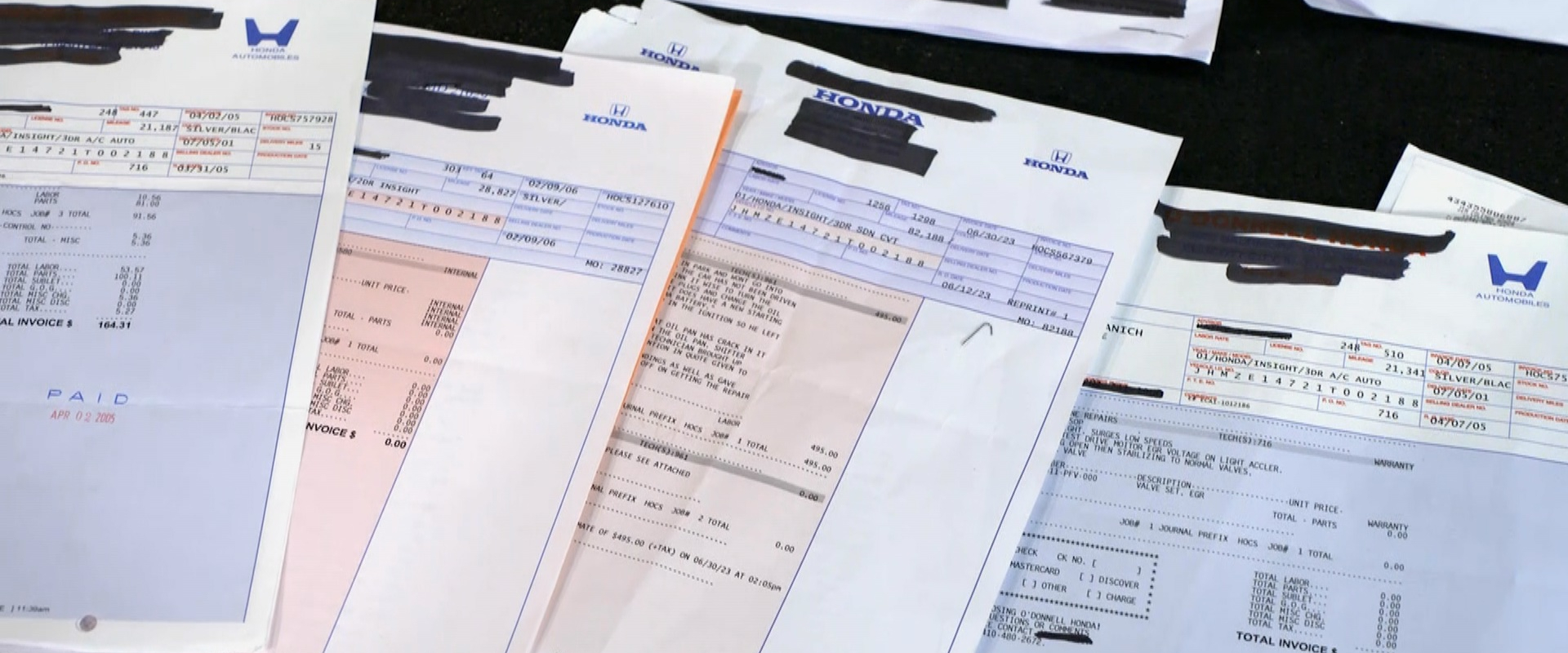Understanding Your Repair Bill
Here at MotorWeek, we love to do basic car care ourselves and encourage you to do the same. but sometimes you just have to enlist the pros. And, when it’s all said and done, the bill can be long and confusing. So, we asked Audra Fordin to decipher the facts to save you some moolah on MotorWeek’s “Your Drive!”
AUDRA FORDIN: Here at MotorWeek, we love seeing people tackle their own car troubles, although sometimes it’s best to leave it to the professionals. But, one of the most common fears about going to the auto mechanic is overpaying.
Here we have typical dealer estimates, and at first it might look like hieroglyphics. Today, we’re going to talk about shop estimates and how to decipher them.
You know, it starts when you walk into the auto shop. It’s your car, it’s your money, it’s your experience. So, before you get any work done, get an estimate. And if you are unsure at that time, wait around or ask for a telephone call before any work is done. Request a breakdown of all the parts, labor and fluids, and services required to fix your vehicle, and you should get a fairly accurate idea of what you’ll be spending. While that’s not always possible when it comes to diagnosis, however for most routine services, like fluid flushes, maintenance and brakes, there’s typically a flat rate or simple standard pricing. We’re going to review a disturbing estimate sent by a viewer. So, let’s take a look at this 2001 Honda Insight.

The car went into the shop needing an oil change, a new oil pan, and a lot of other work, but the owner knew it had rear brakes and a seized left front caliper. Ok, that needs to be fixed. Now, the estimate calls for four-wheel brakes and rotors, including the pads, the rotors, the drums and the brake shoes. The cost for the parts alone is $742. The concern here is that the rear brakes were new. To make some matters worse, some unscrupulous shops will charge for parts that were never installed. To avoid this, keep your records and reference your records before taking your car in to the auto shop. Ask them to save the old parts for you.
The hourly labor rate should be posted on the wall somewhere, but what they don’t tell you is that the amount of time that they will charge for the job is not actually the time that it will take, so ask in advance. There are labor rate guides that give you the average time it should take for every maintenance on every repair for every car, and that’s what the estimate is based on, on most cars. But, when we get these extra fees, like, in addition to parts and labor and fluids, there’s the testing and diagnosis; but then hazardous waste and administrative fees, and shop supplies, and miscellaneous. It’s a lot of extras. You know, while some are mandated by law, but when it comes to the administrative fees and the road test fees, those feel a little bit unnecessary. In this case, the customer racked up an extra $42 here in admin fees alone.
In total, this estimate came out to $5,500, and our calculation was only a fraction of the cost. So, the lessons here are to read through your invoices and make sure you understand what everything means. If something is unclear, just ask. And if there any jobs you can do yourself to save some cash, it might be worth the effort. If you have any questions or comments, reach out to us, right here at MotorWeek.






